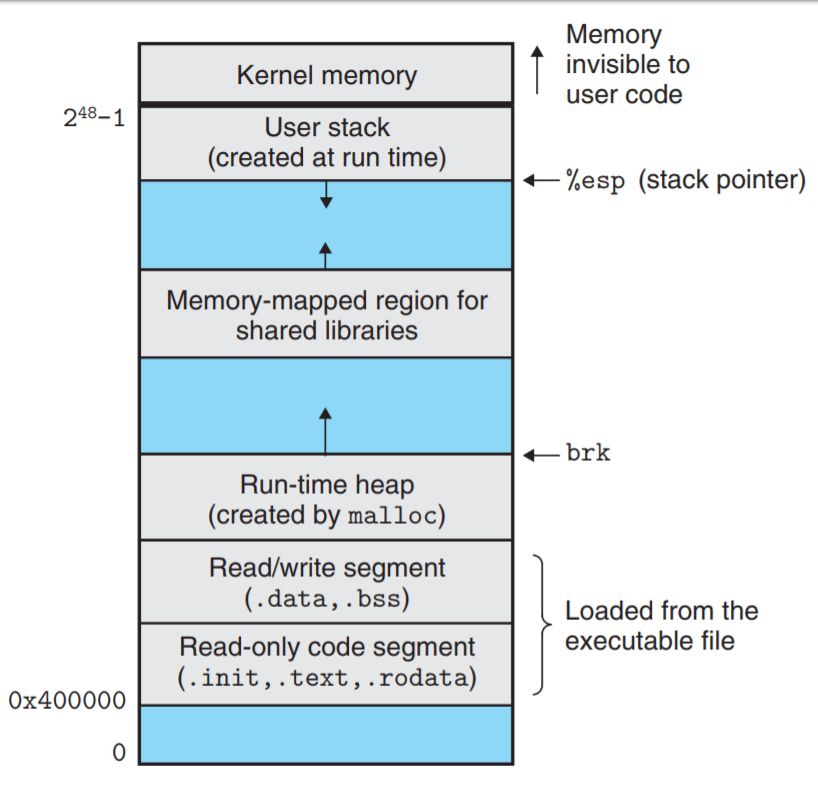Instruction Address Placement in Linux Process Memory Layout
Why are instruction addresses located at the top of the memory user space, contrary to the linux process memory layout?
This article explores how the memory layout of a simple C program varies due to modern compiler settings. By default, GCC now compiles executables as Position Independent Executables (PIE) for security, enabling Address Space Layout Randomization (ASLR), which randomizes where code like iLoveU() is placed in memory, deviating from traditional fixed addresses like 0x400000.
This results in different memory addresses for functions on each run, enhancing security but potentially confusing developers expecting static memory placements.
Let's consider a simple program like below:
#include <stdio.h>
void iLoveU()
{
// doing nothing
}
int main()
{
printf("%p", &iLoveU);
return 0;
}Once you will compile and run the above code you will find the below output:
0x5b70f2e42149%This will trigger a question in your mind that:
Why does this program give
0x5b702f42149%the address?Because our code should be available in the
.textsegment.
Also, according to the below image (taken from CS: APP)
The address of the iLoveU should be near the starting address of .text segment which is around 0x4000000.., but this address is stored in the middle somwhere. Local variables stored on the stack have addresses near 2^48 - 1.
When GCC is configured with --enable-default-pie (which is now the default), it generates Position Independent Executables (PIE). This means the actual load address of the program differs from the compile-time linker-specified address (0x400000 for x86_64). This is a security feature to support Address Space Layout Randomization (ASLR). Essentially, GCC uses the -pie option by default during compilation.
If you compile with -no-pie (e.g., gcc -no-pie file.c), you'll observe the address of functions closer to 0x400000.
On my setup, I get:
$ gcc -no-pie instruction_process_memory_layout.c
$ ./a.out
0x401136%Expected output will be something like below:
You can confirm the load address using readelf:
$ readelf -Wl pl.out | grep LOAD
LOAD 0x000000 0x0000000000400000 0x0000000000400000 0x000500 0x000500 R 0x1000
LOAD 0x001000 0x0000000000401000 0x0000000000401000 0x00017d 0x00017d R E 0x1000
LOAD 0x002000 0x0000000000402000 0x0000000000402000 0x00010c 0x00010c R 0x1000
LOAD 0x002e10 0x0000000000403e10 0x0000000000403e10 0x000220 0x000228 RW 0x1000You can check if --enable-default-pie is enabled by using gcc --verbose.
You might also see that the address printed by your program changes with each execution due to ASLR. To disable ASLR for testing purposes, you can use:
$ echo 0 | sudo tee /proc/sys/kernel/randomize_va_spaceASLR is enabled by default on Linux systems.
References:



